If I could sit my younger self down, I would dispense one piece of advice: “Buy less stuff.” (Sorry if you hoped for something more profound.)
In 2021, my stuff and I moved back to my house after living in an intentional community for 15 years. My kids also moved to and from home a couple of times each during the Great Disruption of 2020–2022, always leaving a box or two behind. We stored everything in what became an impenetrable garage.
For the past two years, I’ve basically had a part-time job Swedish death cleaning my way through the clutter. I found four vacuum cleaners and a dust buster out there, a box of linens I packed when we moved to the US in ‘98 and not only the big-girl bed I bought Charlotte when she was two (she’s now 22), but also the faded receipt for it.
Society has surpassed peak stuff
We buy so much stuff that an entire ecosystem—the un-supply chain—has sprung up to help us manage it: stores filled with stuff to organize our stuff, storage units to park stuff we will never again use but can’t bear to part with and professional organizers excavating us from beneath mountains of stuff, for example.
When taking a break from managing our stuff, we might watch others struggle with theirs in an episode of Hoarders, Tidying Up with Marie Kondo or Home Edit, just some selections from the reality TV genre, I-own-too-much-stuff.
Yet we keep buying more.
The National Retail Federation predicts that retail sales in the US will reach between $5.13 trillion and $5.23 trillion this year. Some of those sales include services. But still. Where will we store everything? And what do we do with it at its end of life?
In a quest to rid myself of boxes and boxes and boxes of stuff—without simply sending it all to landfill—I’ve come up with a hierarchy/how-to of responsible disposal.
Give it to someone who will use it
People will jump at free stuff. If you charge as much as $5, prepare for hagglers. (However, selling on an app like OfferUp is an option.)
Neighbors on Buy Nothing and Nextdoor want the stuff you don’t
Members of my Buy Nothing group are more selective and unloading items there requires a bit more work than Nextdoor. You post your item, let it “simmer” 24 hours and then randomly select the recipient. By waiting at least a day, more people have a shot at that now-vintage dress you found in the attic. Offering items on Buy Nothing builds up good karma that can pay off when you request something.
If I want to get rid of something quickly, I’ll post it on Nextdoor. The site doesn’t have the same friendly, community-building feel as Buy Nothing and some posts make you despair for humanity but people will take almost anything on there.
Because Substack limits newsletter size (and to spare you) I’ve shared below pictures of only some of the things I’ve given away recently on Buy Nothing or Nextdoor.
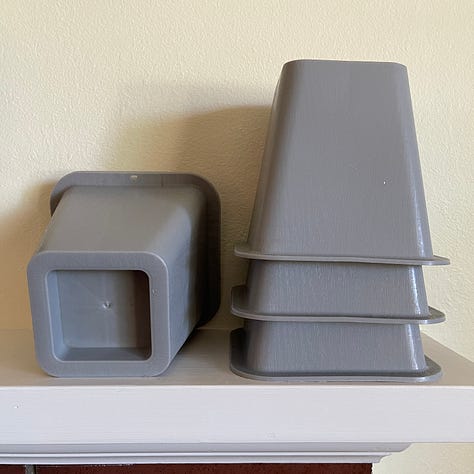

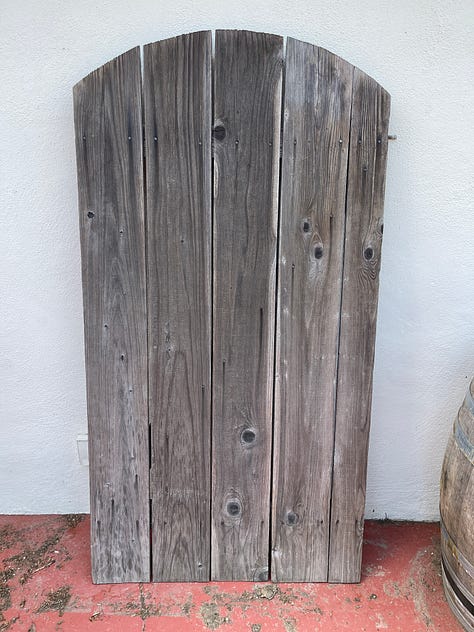


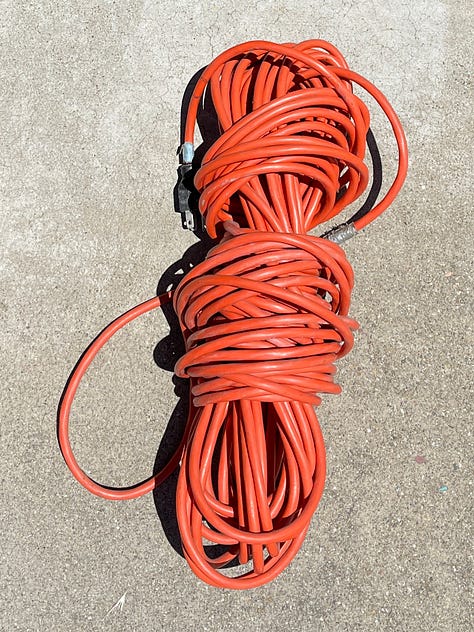

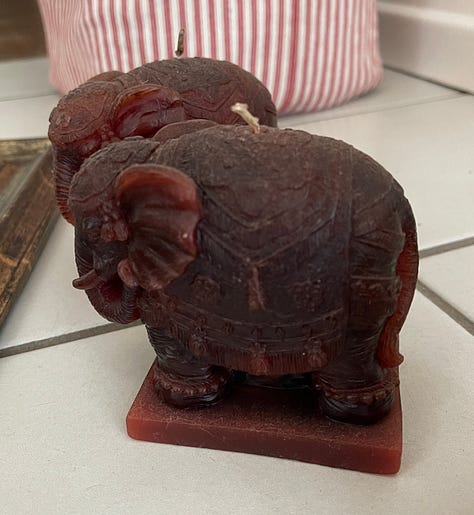

Stuff often disappears on the curb
Sometimes I’ll put good stuff out on the curb that I know will go. A neighbor across the street thanked me for the (mostly) functional bike I recently set out there. She said her handy husband knows how to fix it. And occasionally I’ll find free stuff on the street for myself! (#karma)
We’ll always have the thrift shop
If I get no bites on either Buy Nothing, Nextdoor or the curb, I’ll pack my items up for the thrift shop. Unlike with Buy Nothing or Nextdoor, I don’t know what happens to this stuff. I drop it off and hope for the best. I do donate quality, useful items, however, and not junk. Thrift shops are not garbage dumps.
How to deal with stuff no one wants
I’ve responsibly unloaded many boxes of usable stuff and we can once again walk around in the garage. Now I’m down to broken stuff and, well, junk—the big challenge.
Repair it yourself
I’ve darned so many socks stashed in my boxes that I won’t need to buy socks for 10 years. If you’d like to mend something and need directions, search online.
YouTube. Whatever you need to repair, YouTube has the relevant video.
iFixit. Find guides to repair all the things, ask questions in the forum, read the latest news on the progress of right to repair laws and much more.
Instructables. Find all kinds of projects, like this spaceship chicken coop, but also tutorials on repairing items.
Patagonia Worn Wear. Watch videos or read guides on repairing clothing.
“How to darn a sock.” This tutorial provides step-by-step guidance to mend holes in your socks.
Find someone to repair it
Last week, my daughter Charlotte 3D printed two small components she needed to repair a broken alarm clock. Because I have no clue how to 3D print a part, were it my clock, I’d have searched for someone to repair it. (Don’t feel you have to do everything yourself!)
I’d look for an upcoming repair café (search here for a repair cafe near you) or pay someone to fix the clock. Farming things out stimulates the local economy and frees up your time. I regularly patronize the tailor, shoe cobbler and vacuum cleaner/sewing machine repair shop.
Look for a take-back program as a last resort
Many socks I had stored couldn’t be salvaged, with their flaccid cuffs or fabric so flimsy that a gust of wind might dissolve them. (Low-waste living can turn you into a bit of a hoarder.) I couldn’t just dump them in the trash. (Writing about low waste keeps you honest.)
Last year, I shipped these spent socks—along with ratty underwear and shot bras—to Knickey, an underwear company. Its take-back program accepts undergarments—and cloth face masks—in any condition. According to the company’s website, “We work with a recycling partner who sorts through all of the items […] grades the materials based on wear and material composition. These grades determine if the material can be reused or recycled.”
I liked that I could ship off our ratty textiles in an existing cardboard box. Other take-back programs will send a large new plastic bag that you then fill and return.
Take-back and recycling programs in the un-supply chain include:
For Days accepts any brand of textiles, shoes and bags in any condition.
Smart Wool accepts any brand of socks in any condition.
ReTold Recycling accepts any textiles in any condition.
The North Face’s Renewed program accepts used North Face clothing and, if needed, repairs it before reselling it.
Levi’s stores accept resellable jeans only but some locations do have tailors on the premises to repair your Levi’s.
Ridwell accepts several hard-to-recycle items, including textiles, such as multi-layer plastic, portable electronic devices, bottle caps, prescription pill bottles, styrofoam and more. Ridwell is similar to Terracycle but more transparent and local (which means it may not be in your neighborhood yet).
A quick search online will turn up many more take-back programs in the burgeoning un-supply chain. Do a bit of homework before using these services and beware greenwashing.
For more resources, check Earth911’s recycling search guides. My city also has a helpful webpage, How to Get Rid of Anything. Your city may have something similar.
When you do buy
Of course, sometimes we need to buy things. I first ask myself:
Do I need it or can I make do?
Can I find it secondhand?
Can I dispose of it in a circular fashion at its end of useful life?
What material is it made of?
What resources went into manufacturing it? (labor, water, energy)
Will it last?
What are the working conditions in its country of origin?
How far does it travel to reach me?
Can I buy it locally from a small business?
Is it packaged excessively and with what material?
How much money and time will this cost me, including future responsible disposal?
Would I be willing to pack it up someday should I move?
As a result of going through this checklist, I don’t buy much stuff!
Consumerism spawned the un-supply chain
The end-of-pipe solutions I’ve listed do not address the source of the waste crisis—overproduction and overconsumption. And many take-back programs feel like indulgences sold by companies preying upon our eco-guilt. The programs also help companies justify their over-production.
Ideally, we would buy only what we need. Although I follow that principle today, it doesn’t eliminate the clutter I accumulated when I didn’t.
So if you know of a time machine I can rent—because I don’t want to buy one and reclutter the garage—I need to have that little sit-down with my younger self and prevent her from creating all this additional work for her future self.




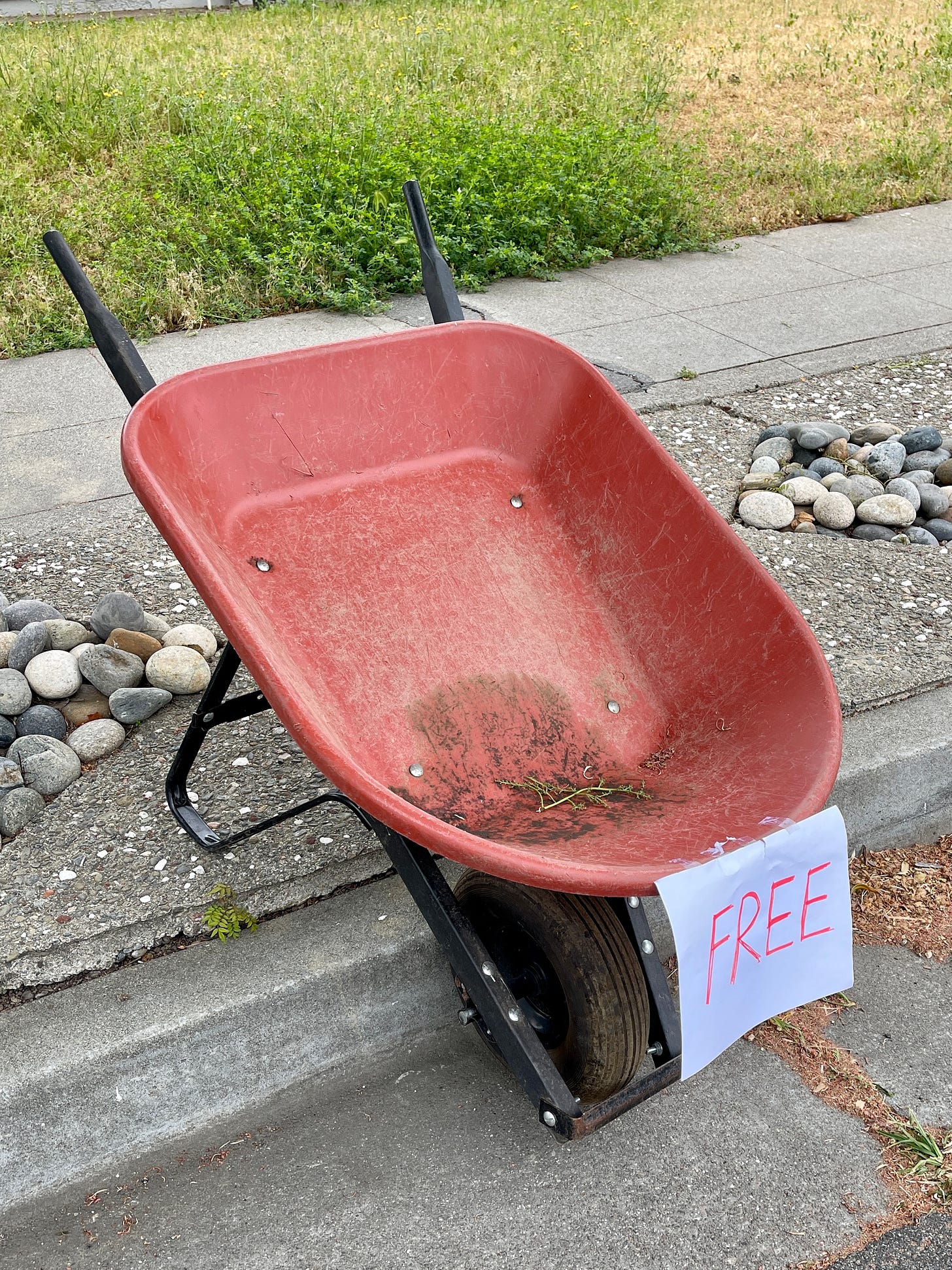
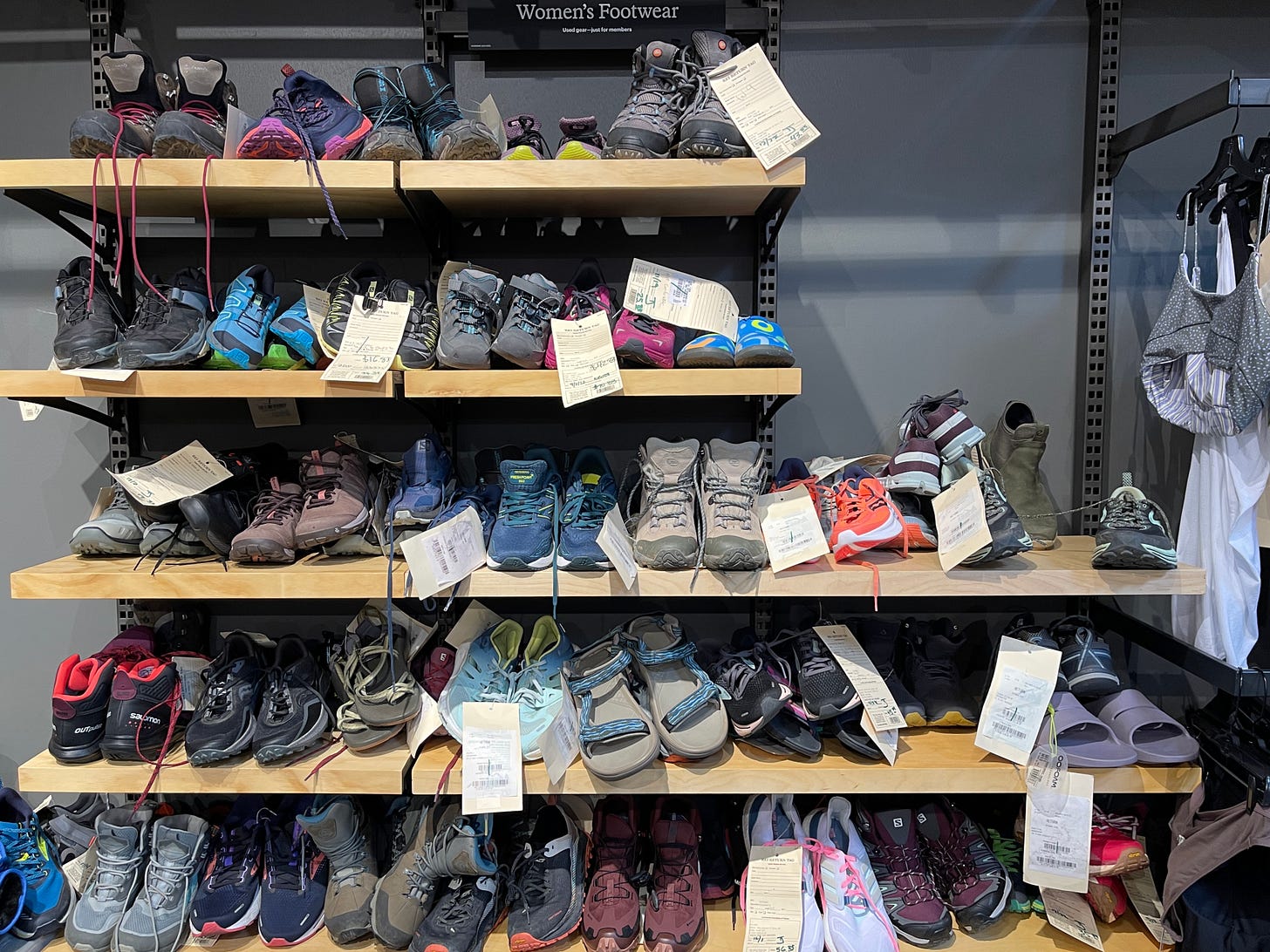
I tell myself, or anyone who will listen, that I don't want to buy ___ because then I'm responsible for it. I'm responsible for enough. I don't want to have to clean it, maintain it, store it or dispose of "it".
Love love love this post. This is exactly where I am in life right now too - just trying to get rid of all the stuff that I unfortunately accumulated in my early life. After cleaning out my parents house last year, I became even more dedicated to not leaving so much stuff for someone else to have to deal with once I'm gone.
It's awesome that there are so many places to give/sell your things. I'm a big fan of Buy Nothing and the front stoop method. I also love Offer Up as another option.